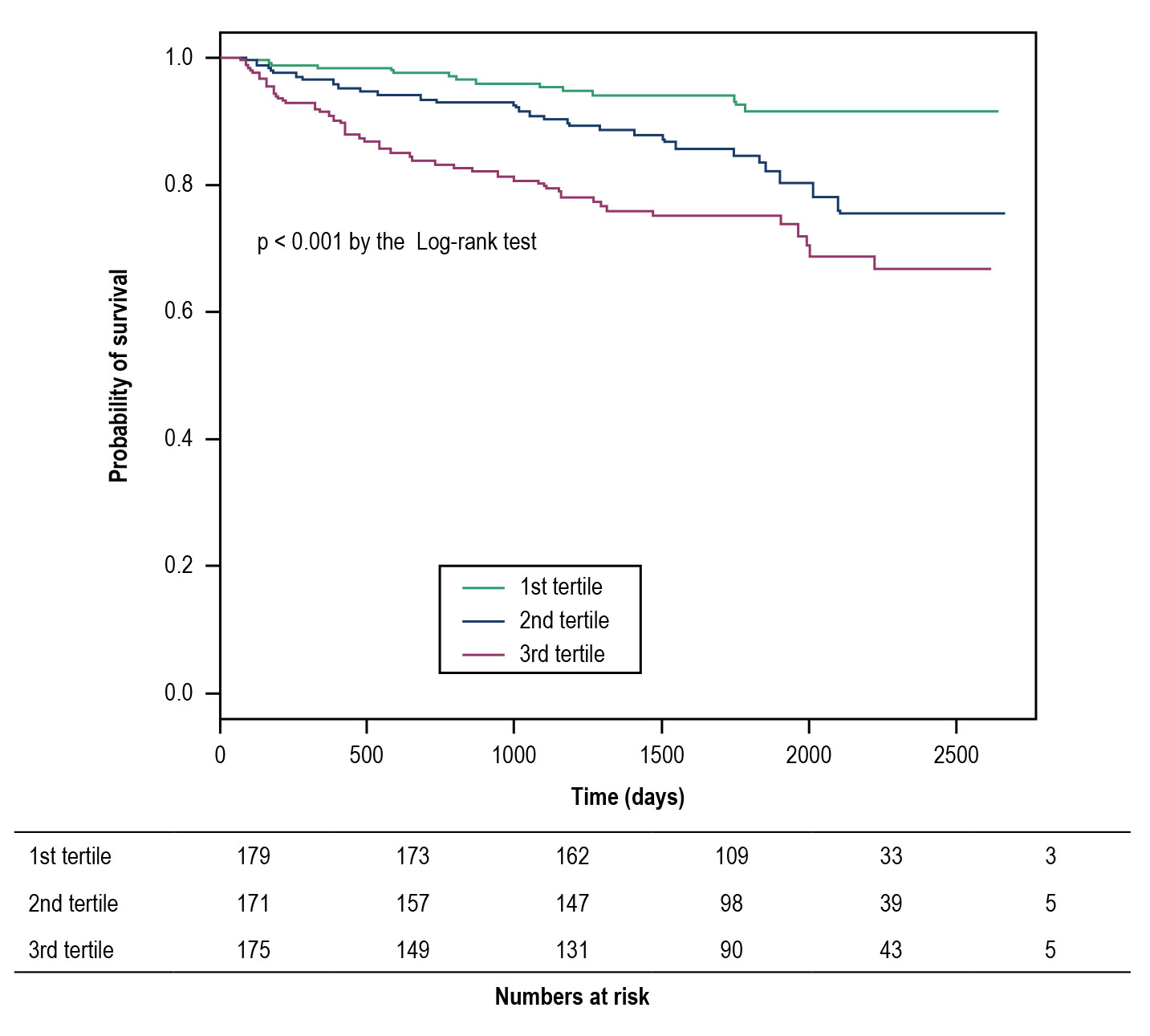Volume 112, Nº 3, March 2019
DOI: http://www.dx.doi.org/10.5935/abc.20180268
ORIGINAL ARTICLE
Elevated High-Sensitivity Troponin I in the Stabilized Phase after na Acute Coronary Syndrome Predicts All-Cause and Cardiovascular Mortality in a Highly Admixed Population: A 7-Year Cohort
Leandro Teixeira de Castro
Itamar de Souza Santos
Alessandra C. Goulart
Alexandre da Costa Pereira
Henrique Lane Staniak
Marcio Sommer Bittencourt
Paulo Andrade Lotufo
Isabela Martins Bensenor

Figure 1 – Kaplan-Meier curve for all-cause mortality according to hs-cTnI tertile measured 25 to 90 days after acute coronary syndrome.
Abstract
Background: High-sensitivity cardiac troponin I (hs-cTnI) has played an important role in the risk stratification of patients during the in-hospital phase of acute coronary syndrome (ACS), but few studies have determined its role as a long-term prognostic marker in the outpatient setting.
Objective: To investigate the association between levels of hs-cTnI measured in the subacute phase after an ACS event and long-term prognosis in a highly admixed population.
Methods: We measured levels of hs-cTnI in 525 patients 25 to 90 days after admission for an ACS event; these patients were then divided into tertiles according to hs-cTnI levels and followed for up to 7 years. We compared all-cause and cardiovascular mortality using Cox proportional hazards models and adopting a significance level of 5%.
Results: After a median follow-up of 51 months, patients in the highest tertile had a greater hazard ratio (HR) for all-cause mortality after adjustment for age, sex, known cardiovascular risk factors, medication use, and demographic factors (HR: 3.84, 95% CI: 1.92-8.12). These findings persisted after further adjustment for estimated glomerular filtration rate < 60 ml/min/1.73 m2 and left ventricular ejection fraction < 0.40 (HR: 6.53, 95% CI: 2.12-20.14). Cardiovascular mortality was significantly higher in the highest tertile after adjustment for age and sex (HR: 5.65, 95% CI: 1.94-16.47) and both in the first (HR: 4.90, 95% CI: 1.35-17.82) and second models of multivariate adjustment (HR: 5.89, 95% CI: 1.08-32.27).
Conclusions: Elevated hs-cTnI levels measured in the stabilized phase after an ACS event are independent predictors of all‑cause and cardiovascular mortality in a highly admixed population. (Arq Bras Cardiol. 2019; 112(3):230-237)
Keywords: Coronary Artery Disease / mortality; Troponin I; Prognosis; Metabolic Syndrome; Biological Variation, Population; Risk Factors.















